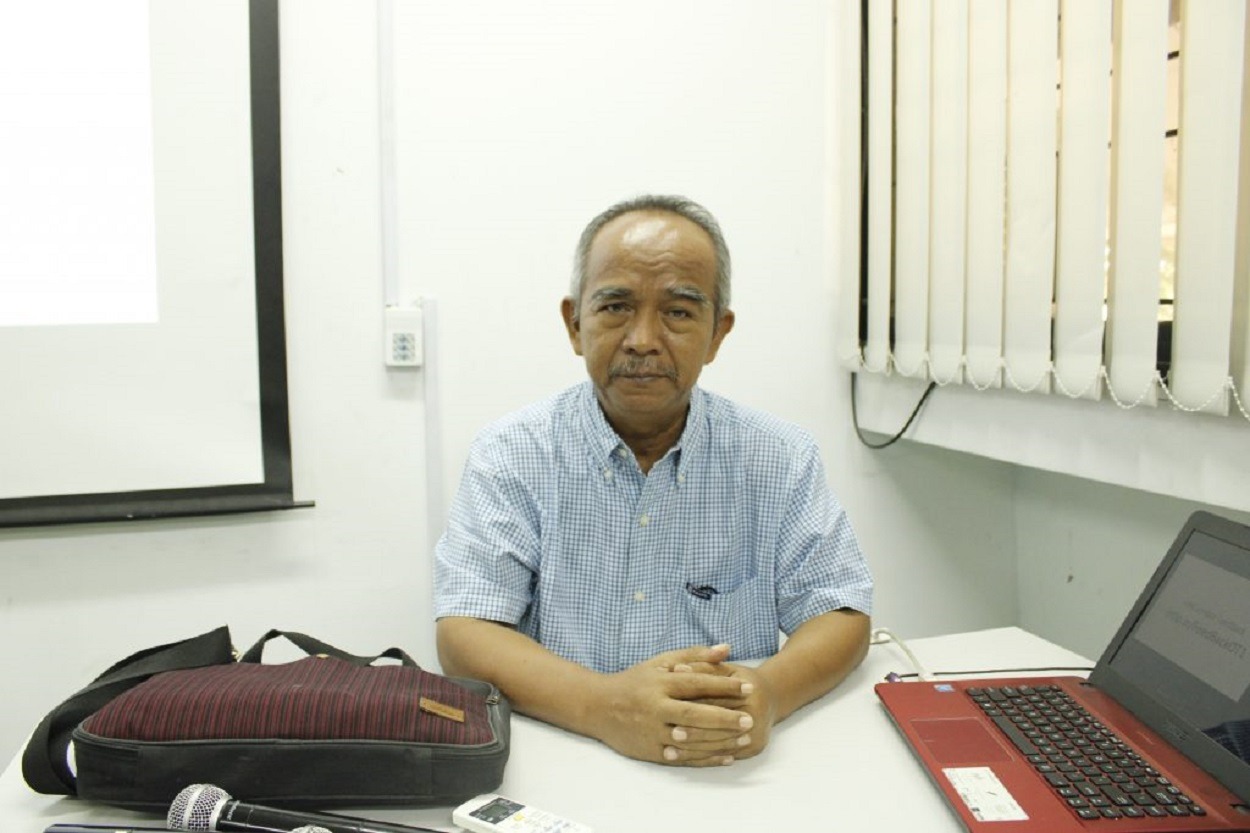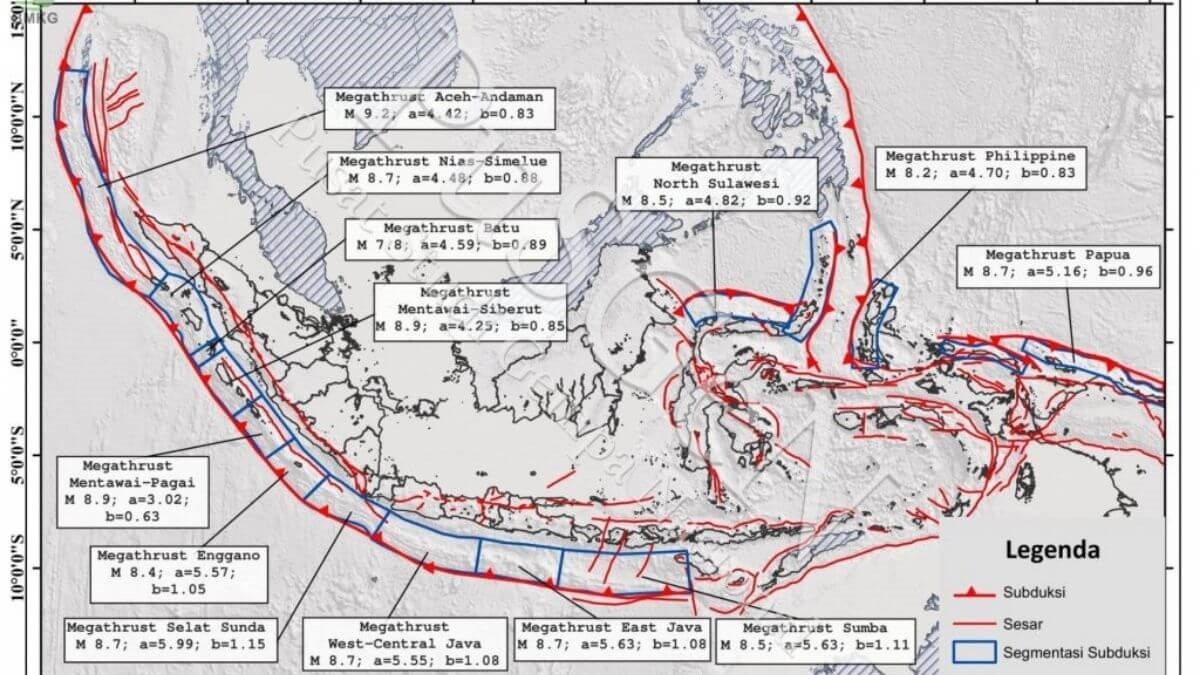ITS Geology Expert’s View on Megathrust Earthquake

Dr Ir Amien Widodo MSi, senior researcher from the ITS Disaster Mitigation and Climate Change Research Center (Puslit MKPI)
ITS Campus, ITS News — Indonesia is one of the countries highly prone to natural disasters. Recently, the Meteorology, Climatology, and Geophysics Agency (BMKG) raised concerns about the potential for a massive Megathrust earthquake in Indonesia.
In response to this, geology expert from Institut Teknologi Sepuluh Nopember (ITS), Dr. Ir. Amien Widodo, MSi, explained that a Megathrust earthquake is triggered by the collision of tectonic plates at a depth of 0-70 kilometers (km). “Megathrust earthquakes occur due to the friction between plate boundaries, while the plates continue to move,” said Amien.
He further elaborated that Indonesia is located between three major tectonic plates: the Eurasian Plate, the Pacific Plate, and the Indian Ocean Plate. These plates have been moving and converging towards the Earth’s surface for millions of years. The continuous movement of these plates leads to the accumulation of energy, which can trigger earthquakes.
The lecturer from the Department of Geophysics added that the movement of tectonic plates will continue at a certain speed, ranging from two to ten centimeters per year. This can result in the collision of the Indo-Australian Oceanic Plate with the Eurasian Plate. “The collision of these two plates has the potential to generate a Megathrust earthquake,” he revealed.

Megathrust earthquake areas in Indonesia (Pusgen 2017)
As a Senior Researcher at the ITS Center for Disaster Mitigation and Climate Change, Amien highlighted that Megathrust earthquakes could impact several regions in Indonesia. These include the western coast of Sumatra, the southern coast of Java, the southern coast of Bali and Nusa Tenggara, the Maluku Islands, North Maluku, the northern and eastern coasts of Sulawesi, and the northern coast of Papua.
“The tectonic plates will continue to move, so Megathrust earthquakes will recur in these areas,” he stated.
At the same time, Amien emphasized that earthquake activity originating from the Megathrust zone is not always of great magnitude. BMKG’s monitoring data shows that small earthquakes are more frequent in the Megathrust zone. “The timing of these earthquakes cannot be predicted, so the public should not panic,” he explained.
He also discussed Megathrust mitigation efforts, advising the public to follow building standards when constructing houses, particularly for those living in coastal areas. This is a precautionary measure against earthquakes, especially for those who might be affected by a large Megathrust event that could trigger tsunamis along the coast. “This is to prevent the potential of a large Megathrust earthquake causing a tsunami on the coastline,” he added. (ITS Public Relations)
Reporter: Hani Aqilah Safitri
News Translator: Nabila Luthfiani
Related News
-
Supports Marine Sustainability, Pertamina Goes to Campus Presents at ITS
ITS Campus, ITS News — Institut Teknologi Sepuluh Nopember (ITS) became one of the partners of Pertamina Goes to
August 18, 2024 19:08 -
Anticipating Lost Pet Dogs, ITS Students Invent a Tracking Bag
ITS Campus, ITS News —Losing a pet is a sad thing for its owners. To anticipate this, a team
August 18, 2024 19:08 -
ITS Students Integrate Smart City Service Features Through Visionaries
ITS Campus, ITS News — Institut Teknologi Sepuluh Nopember (ITS) continues to prove itself as a home for talented
August 18, 2024 19:08 -
ITS Students Innovate Eco-Quake Building Concept
ITS Campus, ITS News — Along with the development of technology, the construction sector has also experienced rapid growth
August 18, 2024 19:08
